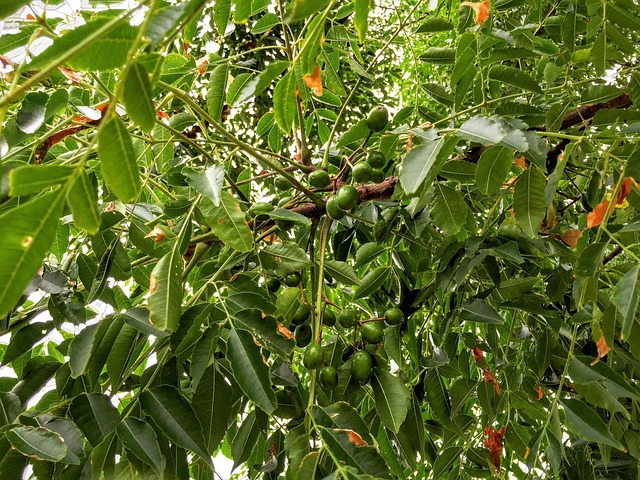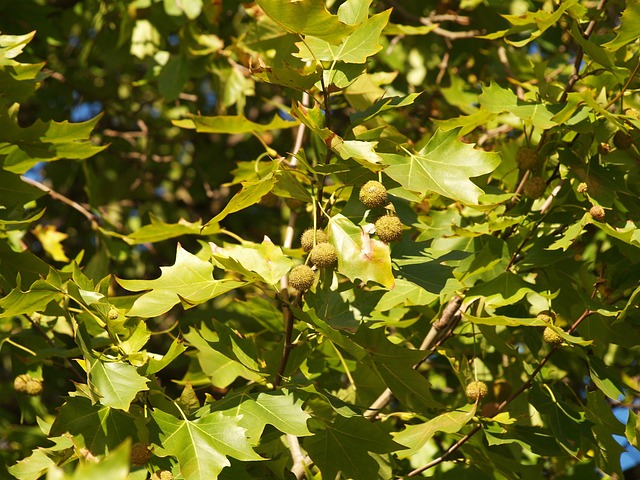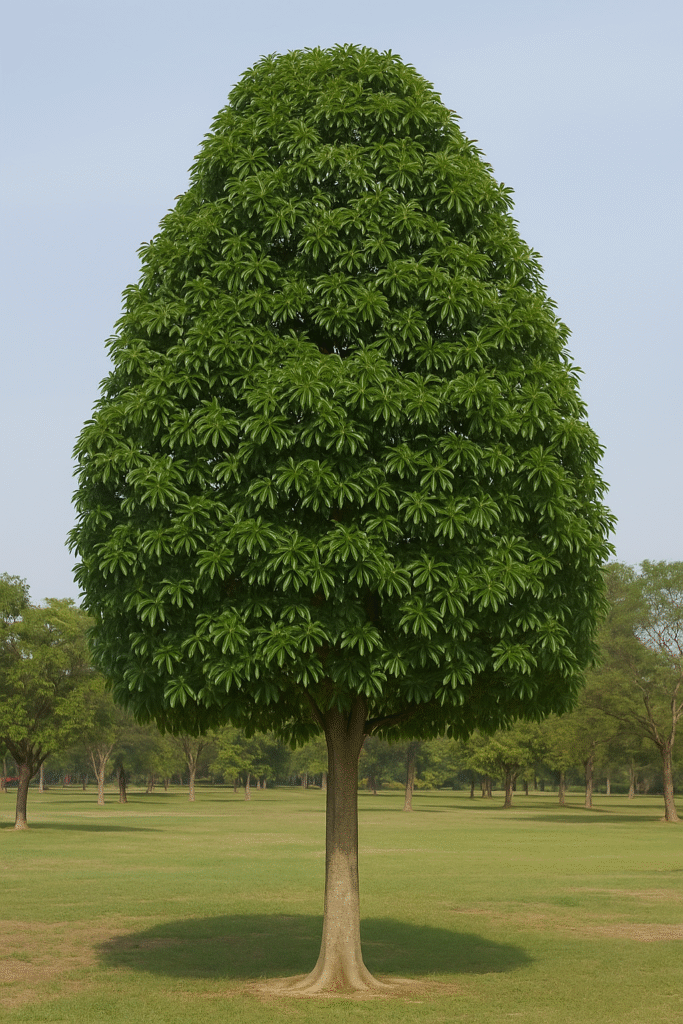
In a country like Pakistan, where the summer sun can be blistering and temperatures regularly soar above 40°C, shade is more than a comfort—it’s a necessity. Whether you’re planning a backyard retreat, a school campus, a roadside plantation, or a public park, shade trees offer natural cooling, reduce energy costs, and add aesthetic value to any space.
From fast-growing native species to ornamental imports, Pakistan is home to a wide variety of shade trees that not only block the heat but also enhance the environment. In this blog, we’ll explore the best shade trees in Pakistan, highlighting their benefits, growth habits, and why they’re ideal for urban and rural landscapes.

Why it’s great: Fast-growing, dense shade, hardy
Ideal for: Roadsides, farms, parks
One of the most commonly planted shade trees in Pakistan, Sheesham is a native species that thrives in hot climates and poor soil. It grows quickly, with a broad canopy that provides deep, cool shade. Besides its shade value, Sheesham is prized for its strong timber, used in furniture and construction.
Bonus: It helps stabilize soil and prevent erosion, making it ideal for canal banks and farmlands.
Gul Mohar (Delonix regia) – Flame Tree

Why it’s great: Stunning flowers and spreading canopy
Ideal for: Avenues, gardens, schools
Gul Mohar is a favorite for urban landscaping due to its wide, umbrella-like canopy and fiery red-orange flowers. It offers moderate to dense shade and creates a visually dramatic scene when in full bloom. Though it sheds leaves in winter, the summer shade it provides is invaluable in cities like Karachi and Multan.
Note: It prefers frost-free areas and well-drained soil.
Amaltas (Cassia fistula) – Golden Shower Tree

Why it’s great: Bright yellow blooms and soothing shade
Ideal for: Gardens, walkways, parks
Amaltas is both a shade tree and a showstopper. Its long, drooping clusters of yellow flowers appear in summer, offering a cheerful splash of color while its foliage casts cool, dappled shade. It’s ideal for lining streets and pathways, especially in regions with hot and dry climates.
Tip: Plant it alongside pink flowering trees like Cassia javanica for a two-tone floral display.
Neem Tree (Azadirachta indica)

Why it’s great: Medicinal properties, drought-resistant, evergreen
Ideal for: Homes, schools, villages
Neem is more than just a shade provider—it’s a natural purifier. With its dense foliage and year-round green canopy, it’s perfect for creating shaded zones in gardens and courtyards. The leaves have antibacterial and insect-repelling qualities, making it a smart choice for public health.
Fun fact: Neem trees are often planted near hospitals and schools for their cooling and purifying effects.
Siris Tree (Albizia lebbeck) – Woman’s Tongue Tree

Why it’s great: Fast-growing, large canopy, fragrant flowers
Ideal for: Public spaces, agricultural fields
Siris is a large deciduous tree that spreads quickly and offers ample shade. Its fragrant, powder-puff flowers attract birds and bees, while the broad canopy provides respite from intense sun. This tree is often seen along highways and in rural plantations for both shade and environmental benefits.
Bonus: Its fallen leaves improve soil fertility.
Bukain (Melia azedarach) – The Fragrant Umbrella

Why it’s great: Spreads wide with dense shade and springtime fragrance
Ideal for: Roadsides, schools, large home gardens
The Bukain tree is a beloved native shade tree known for its wide-spreading canopy and fragrant lilac-colored flowers in spring. Its fern-like foliage provides ample cover from the sun, making it ideal for public places and home gardens alike. Fast-growing and tolerant of urban pollution, it’s a top choice for hot Pakistani cities.
🌿 Tip: Regular pruning in early years helps form a strong, balanced structure.
Sukhchain (Pongamia pinnata) – Hardy and Green Year-Round

Why it’s great: Evergreen, drought-resistant, and deep shade provider
Ideal for: Farms, streets, schools, dry regions
Sukhchain is an evergreen shade tree known for its resilience in dry, harsh climates. Its dense canopy offers deep shade even in peak summer, while its glossy green leaves stay vibrant throughout the year. It also improves soil health through nitrogen fixation, making it a great choice for eco-conscious planting.
🌱 Tip: Once established, it needs very little water or care—perfect for low-maintenance landscapes.
Chinar Tree (Platanus orientalis) – Oriental Plane Tree

Why it’s great: Huge leaves, iconic presence, autumn colors
Ideal for: Northern regions, heritage gardens
Native to Kashmir and northern Pakistan, the Chinar tree is famous for its massive leaves and spreading branches. In summer, it offers dense, cool shade, while in autumn, its foliage turns vibrant orange, red, and gold, adding seasonal beauty.
Cultural value: Historically planted in Mughal gardens and near shrines, Chinar is a symbol of heritage and serenity.
Peepal Tree (Ficus religiosa) – Sacred Fig

Why it’s great: Heart-shaped leaves, spiritual significance, great for biodiversity
Ideal for: Villages, religious sites, parks
Peepal trees are revered across South Asia and provide enormous shade. Their wide canopy makes them ideal for community spaces, temples, and roadside rest areas. The rustling of its leaves in the breeze offers a soothing sound, while its roots support local ecosystems.
Environmental benefit: It produces oxygen even at night—a rare trait among trees.
Alstonia (Alstonia scholaris) – Blackboard Tree

Why it’s great: Tall, symmetrical, evergreen
Ideal for: Institutions, wide streets, large gardens
Alstonia is an elegant, fast-growing evergreen with shiny leaves and a neat, rounded crown. Commonly planted in educational institutions, its vertical growth and dense foliage make it an effective shade tree that doesn’t take up much lateral space.
Extra: It emits a strong scent when flowering, which some people love and others dislike—choose planting locations accordingly.
Cassia javanica – Pink Shower Tree

Why it’s great: Shade and spring blooms in one
Ideal for: Gardens, campuses, decorative landscapes
Cassia javanica is perfect if you want a shade tree that also blooms beautifully. In spring, it’s covered in pink to rose-colored flowers while still providing generous shade with its layered leaves. It grows well in warm, humid climates and adds ornamental appeal to urban settings.
Pairing idea: Plant alongside Gul Mohar or Amaltas for a vibrant summer canopy.
Banyan Tree (Ficus benghalensis) – The Giant Canopy

Why it’s great: Massive shade coverage, cultural value, air purifying
Ideal for: Parks, rural areas, historical landmarks
If you’re looking for the king of shade trees, look no further than the Banyan. With its wide-reaching branches and aerial roots, it can cover large areas and create a microclimate underneath. Often found near old shrines or rural community spaces, it’s a living legacy of history and resilience.
Important: Requires space—avoid planting in small gardens due to root expansion.
Why Shade Trees Matter in Pakistan
Shade trees are not just ornamental—they are vital to life in Pakistan’s harsh climate. Here’s why they matter:
- Temperature Regulation: Trees can reduce surrounding temperatures by 5–10°C.
- Energy Savings: Properly placed shade trees lower cooling costs in homes and offices.
- Pollution Reduction: Trees absorb pollutants, clean the air, and improve health.
- Biodiversity: They provide shelter for birds, insects, and other beneficial wildlife.
- Aesthetic & Psychological Benefits: Greenery improves mood, reduces stress, and enhances urban beauty.
From the sprawling branches of the Banyan to the flowering elegance of Cassia javanica, the best shade trees in Pakistan bring more than just relief from the sun. They enrich our lives, cities, and countryside with beauty, biodiversity, and natural cooling power.
If you’re considering planting a tree, think long-term—pick a species that suits your climate, space, and aesthetic goals. Whether for a garden, avenue, school, or farm, there’s a perfect shade tree waiting to grow.
